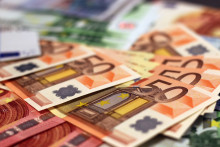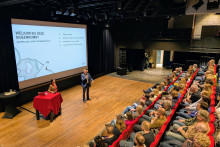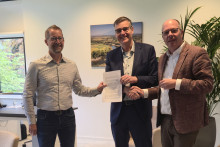The coronavirus crisis that has gripped the nation is even more reason for the government to invest in the economy. This plan was already on the books but the crisis only exacerbated its importance, according to the government.
In a special press conference, VVD Minister Wiebes emphasised that other parties including PvdA and GroenLinks would also be calling for such investments. ‘Everyone understands that investment is the country’s way out of the crisis.’
Removed
‘Corporations, civil society and government bodies’ are all allowed to submit proposals. The decision of where the money goes should not be political. Mr Wiebes ensures the public that decision-makers will be far removed from the political arena.
Minister Hoekstra of the CDA explained that the money will be borrowed thanks to low and even negative interest rates on government loans. At the moment, the Netherlands is actually given money when it takes out a loan. This is the result of high levels of confidence investors currently have in the Netherlands.
The government has a number of ideas about monitoring the expenses: there will be independent advice and calculations, with various appointed experts and responsibilities. And there is no requirement to spend the entire budget. If no suitable projects are found in a specific year, then the funds remain untouched.
30 million
Every project should cost at least 30 million euros. This is a one-off investment, not a structural expenditure. An independent committee determines the cost and gain of each proposal. The government then makes the final decision.
The question is how the money will be distributed. Will the three pillars of knowledge, innovation and infrastructure each receive a third of the money? The government has budgetary power and has a say in how the fund’s budget is spent.
There will be an annual State of the Economy address, where the Ministers of Finance and of Economic Affairs & Climate Policy present the new investment plans. This should help prevent the investment plans from getting lost in the huge pile of topics on the political agenda.
The government wants to begin by approving the investments at the beginning of next year. Coincidentally or not, the date has been scheduled at right before the general elections in March. ‘We have been inundated with great ideas in recent months’, said Hoekstra. ‘But we won’t be assessing them ourselves.’ This is where the assessment committee comes in.
Rock-solid education
Some of the funding should be allocated to ‘rock-solid primary, secondary, vocational and higher education’. The government wants to see ‘improvements to the curriculum’ but has not yet provided clear examples.
The business community will be involved in research & development. ‘Investments in R&D and innovation usually lead to the best results when the government, the business community and academia work together’, according to the Ministers.
After all, the physical infrastructure is about more than roads and bridges, it also includes energy and digital connections. The idea is to keep the Netherlands accessible, so living and working here continues to be an attractive option.
Growth
Ultimately, this should lead to stronger economic growth. Households will feel it in their pockets, said the government. Increasing prosperity should help to keep healthcare and education affordable.
The plan was to budget funds for the next twenty to thirty years, but given the current economic uncertainty the government has decided to defer this decision to the next government.
The committee includes physicist Robbert Dijkgraaf, rector Rianne Letschert of Maastricht University and chairman Robbert-Jan Smits of Eindhoven University of Technology and professionals from the business community.







